A review of my trip through the Mid-Atlantic States
My third trip back in February was a planned shorter trip that was shortened even more due to severe leg pain I experienced. The pain was due to, in medical terms, my lower spine “being a mess”. Vertebrae were out of whack (another medical term) and nerves were being pinched.
Less than three weeks after I returned from that trip, I underwent surgery to try and unwhack the back. Now, two and a half months later, I was off on an ambitious trip 4, with plans to visit 14 Park sites in Maryland, Pennsylvania, New Jersey, and Delaware. It would be a good test of the surgery’s success, especially the visit to Philadelphia where there would be a lot of walking. And I am happy to report that it was a tremendous success.
I walked close to 4.5 miles around Independence National Historical Park in Philadelphia and had none of the pains that chased me out of New Orleans. By the end of the day, I was a bit fatigued as I had not walked that far in a few years, but it was nice to be able to do it again.
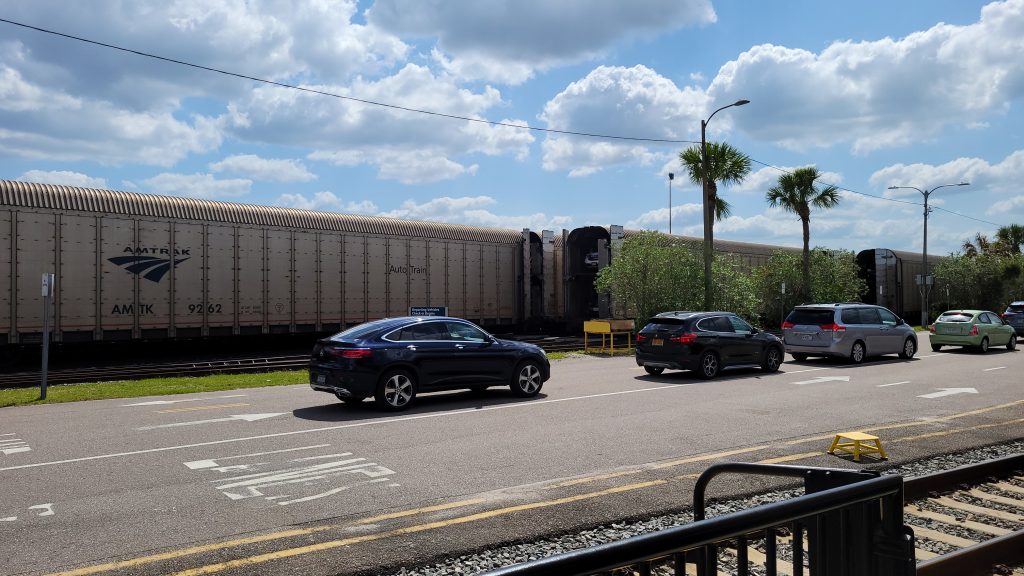
The trip itself was also very enjoyable, and, as I am becoming used to, very educational. I tried a new mode of transportation for this trip: the Amtrak AutoTrain. This train runs daily from Sanford, Florida (located just northeast of Orlando) to Lorton, Virginia (just southeast of Washington DC) taking about 16 hours. As the name implies, your car travels with you (no, not in the same compartment!) so once I arrived in Lorton, I could continue my trip in the comfort of my own car.
The AutoTrain does not save much time, as I needed to drive 90 minutes to the train station from my home, then wait close to five hours until departure. My train was running about two hours late, but even an on-time trip takes 16 hours. This is followed by a wait for my car to be unloaded and as is usual, mine is toward the end of the unload – about a 90-minute wait. Thus, from leaving my home until leaving the train station in my car totaled about 25 hours.
Had I decided to just drive from my home to Lorton, up Interstate 95, with an overnight stop at some point, it would have taken me about the same. I would have left home around 7:30 am and arrived around Roanoke Rapids, NC around 6:00 pm. After spending the night and leaving by 6:30 am, I would arrive in Lorton at 9:30 am, about 26 hours after leaving home.
The difference is with the train, I’m nicely rested. If I had driven, I’m tired and stressed from the traffic on I-95. On my next trip to this area. I think I will use the train again.
After arriving a bit late on a rainy day, I simply headed to the hotel for the night. I had planned a few non-NPS park visits had we been early but scrapped those as the afternoon was getting late. While in the hotel, I discovered a rather rare error in my planning. I had planned to visit parts of the Potomac Heritage National Scenic Trail the next day, where it follows the Potomac River northwest of Washington. However, I discovered that of the three Visitor’s Centers where I had planned to stop, two were closed on weekdays and the third opened late. I was faced with losing two hours time waiting for it to open, or backtracking to it later in the day. Or –
I altered my trip! Antietam National Battlefield was not very far away but was in my Group 6 for a future visit. Looking at my “master plan”, I moved Antietam from Group 6 to the Group 5 I was currently visiting. I then moved Potomac Heritage NST from Group 5 to Group 7. Why Group 7? In that group, I had the Chesapeake & Ohio Canal NHP. The canal and the trail follow the same route for many miles along the Potomac, so it really made more sense to visit both in one shot. Group 6 was a bit larger anyway, so losing one site is not a big deal.
So off to Antietam I go. I had visited here once many years (think early 1980s) ago. As a history and American Civil War buff, I was somewhat familiar with the events leading up to the battle, the high points and infamous locations on the battlefield, and the results. However, to me, I gain a much greater understanding when I can actually stand where the events happened. I can see what the soldiers saw. I can appreciate the size and scope of the battlefield – in this case stretching some seven miles north to south and a few miles across.
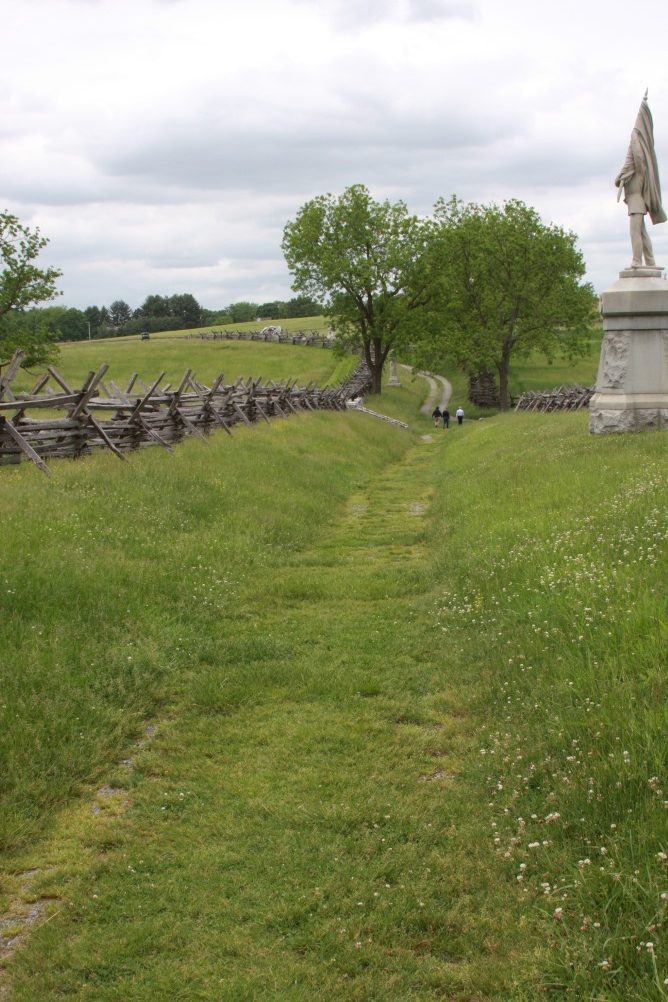
Being in the park, and listening to a ranger describe the action while pointing to each location adds a lot to understanding all that happened. And it was in such a ranger presentation that I learned just how deadly this battle was. Okay, I knew it was the bloodiest day in American military history with over 23,000 soldiers on both sides (25% of the total engaged) becoming casualties. But when the ranger phrased it as “one casualty per second” through the morning, one can really appreciate what a slaughter it was.
I moved on from Antietam to another Civil War battlefield. Here is an example of what the National Park Service provides. Despite my interest in the Civil War, I had never heard of the battle at Monocacy Creek. Thanks to the Park Service protecting it, now I have. In September of 1864, most attention in the history books is on Grant’s battles with Lee around Richmond. But during those major battles, the Confederates tried another invasion of Maryland with the intent of threatening Washington. It was a smart move as Grant had drawn most of the troops from Washington to aid in the Richmond battles, leaving untried recruits in the city.
Union General Lew Wallace hastily formed a force to head west and meet the Confederates. It was far smaller and full of soldiers who had never been in battle. They had no chance at victory, but victory was not their goal. Delay was. And the 24 hours that Wallace was able to slow the Confederate advance was enough for Grant to return some veteran troops north and protect Washington. Lew Wallace was to later write the book “Ben-Hur”.
I headed north from Monocacy National Battlefield, stopping in Catoctin Mountain Park. This was a rather odd National Park unit. It was far more like a state park (of which Maryland had one right next to it). It was a beautiful, wooded park with picnic grounds and hiking trails. Well, it did have one section that justified a federal presence: Camp David, the Presidential Retreat, is located within this park. Otherwise, it was just a relaxing break for a few hours, then I headed up to Gettysburg. I last visited here in 1967. Or was it 1966?
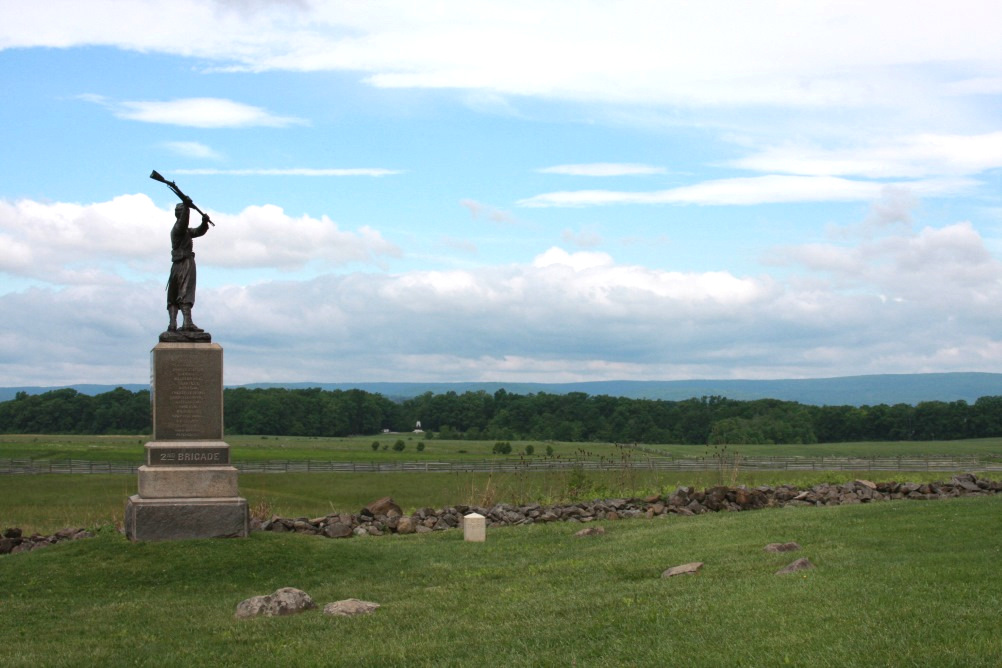
If Antietam was one horrific and bloody day, Gettysburg did the same for three straight days. In Robert E. Lee’s second northern invasion, 53,000 men on both sides became casualties. If you have seen the movie “Gettysburg” (and you should), everything I’ve read about it claims that it is very realistic in showing what battle was like. This place had an extra meaning for me, as I sought the marker for the 147th New York infantry. This unit was one of the first to engage on July 1, 1863 northwest of the town itself. Seventy-five percent of the unit were casualties before the battle ended, including an ancestor of mine. He survived his wound (and a later wound at the Wilderness battle) to live into the 1920s.
Leaving Gettysburg, I took a break from the Civil War, but not American history. Hopewell Furnace was built around 1770 and provided iron to the Philadelphia area for many years. At its peak, it was a village unto itself, with housing and a store for workers. The ingenuity of those who build the furnace is evidenced by the giant water wheel, powered by a small stream, which converted its turns into an in-out motion used by large bellows. These bellows forced air into the furnace to increase its temperature.
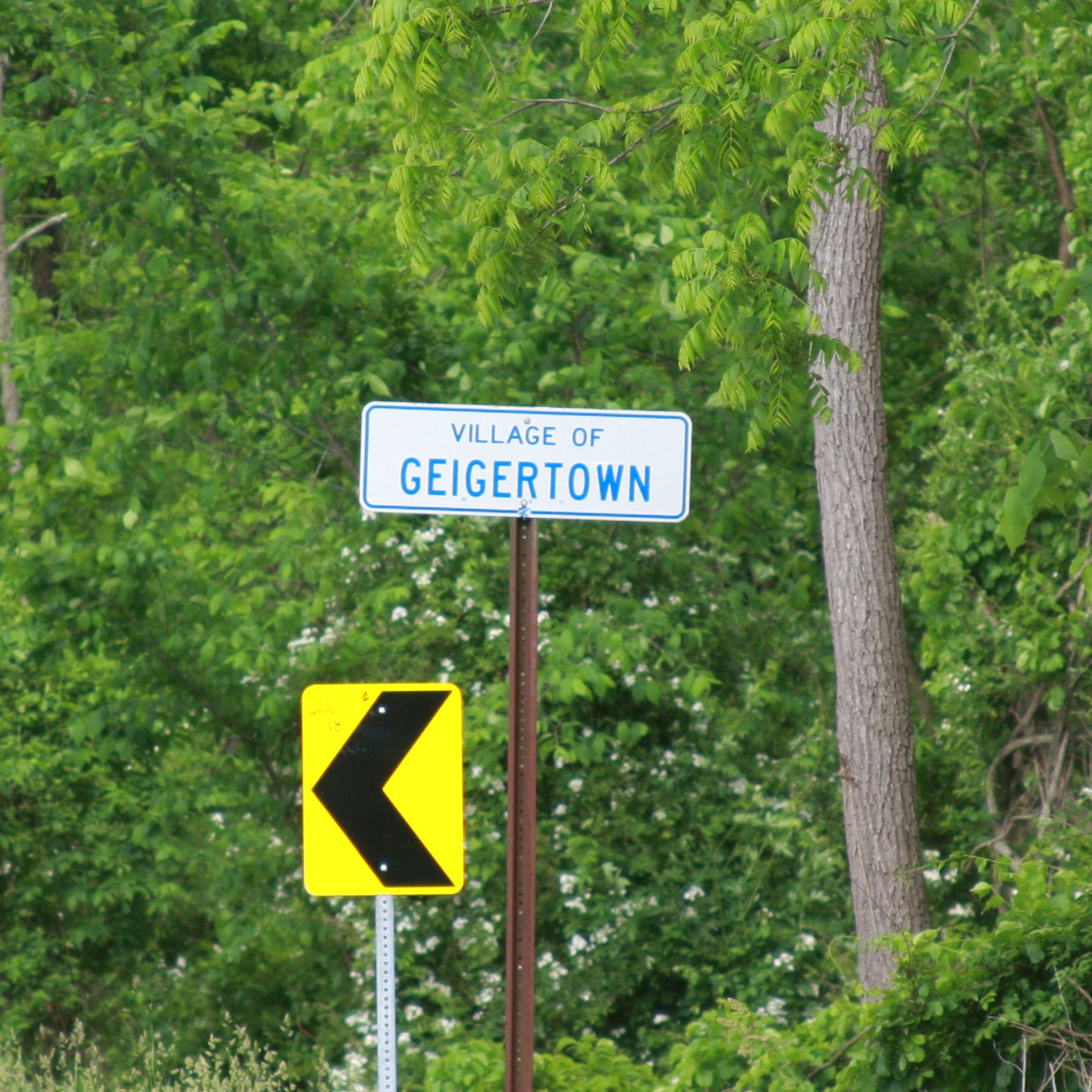
I did slip two personal stops into the trip. Near Hopewell Furnace is the Village of Geigertown. Founded by a maternal ancestor, several family members are buried in the small cemetery by the Lutheran Church. I stopped by, paid my respects, and took several photographs to aid in my family genealogy interest.
The second trip was to visit a former co-worker. We had never met face-to-face and it was a pleasure to finally do so. I was treated to a tour of his home-office setup, which puts mine to shame (multiple HP3000 computers, several Windows systems, gigabyte networking, a huge 4K monitor, and all wiring neatly wrapped (I fail badly on that last one)). He is also a 20 veteran volunteer EMT and gave me a tour of their station. The visit was topped off by an excellent Lasagna meal prepared by his wife. I really appreciated their hospitality and it was a great and relaxing break from a hectic trip.
Back onto the trip, I moved backward in history to the Revolutionary War period with a trip to Valley Forge. I discovered that this was far more than a winter’s shelter for the battered Continental Army. It became a full-blown town at its peak, and a time of intense training and drilling of the army by the Prussian von Steuben. The army left in June 1778 a far more formidable fighting force.
Independence National Historical Park was a disappointment for reasons I list in the blog specific to that park. Nonetheless, it was nice to be able to see up close the Liberty Bell and Independence Hall. I blame myself for not remembering to get tickets to tour the hall, but if my travels bring me back nearby, perhaps I’ll remedy that.
The next two days were places where the National Park Service claims a site but has no presence! Great Egg Harbor River National Scenic and Recreational River is surrounded by either private lands or various state and local parks, that administer picnic, camping, and river access. The NPS has a small table in a Nature Center where they have their pamphlets and passport stamps. I personally did not find the river particularly scenic, but then, I could only see it in a few places unless I wanted to canoe it.
With little to see of the river, I took a side trip to Cape May Point State Park, the southern-most point in New Jersey, and gazed out to sea. Then I headed back toward Delaware.
Delaware had no National Park sites anywhere within the state at one time. It appears that the solution to this was to pick several state and local sites and declare them to be First State National Historical Park. “First State” refers to Delaware’s status as the first state to ratify the U.S. Constitution on December 7, 1787.
Included in this “park” are the John Dickinson Plantation, home of a representative to Congress who opposed independence, Dover Green and old State House, where that ratification took place, New Castle court house and old arsenal, and a few other locations that were closed during my visit.
Both the Great Egg Harbor River and First State parks lack any sort of NPS signage, so they became the only two parks (so far) where I do not have a photo of me by the park sign. I’ll have to decide how to handle that!
I headed back into Philadelphia on a Saturday to visit two sites that are only open on weekends. Edgar Allan Poe National Historic Site is open all day, so I started there in the morning. Though there is not much to the house, the information within provided a fascinating look into the life of a great but troubled writer.
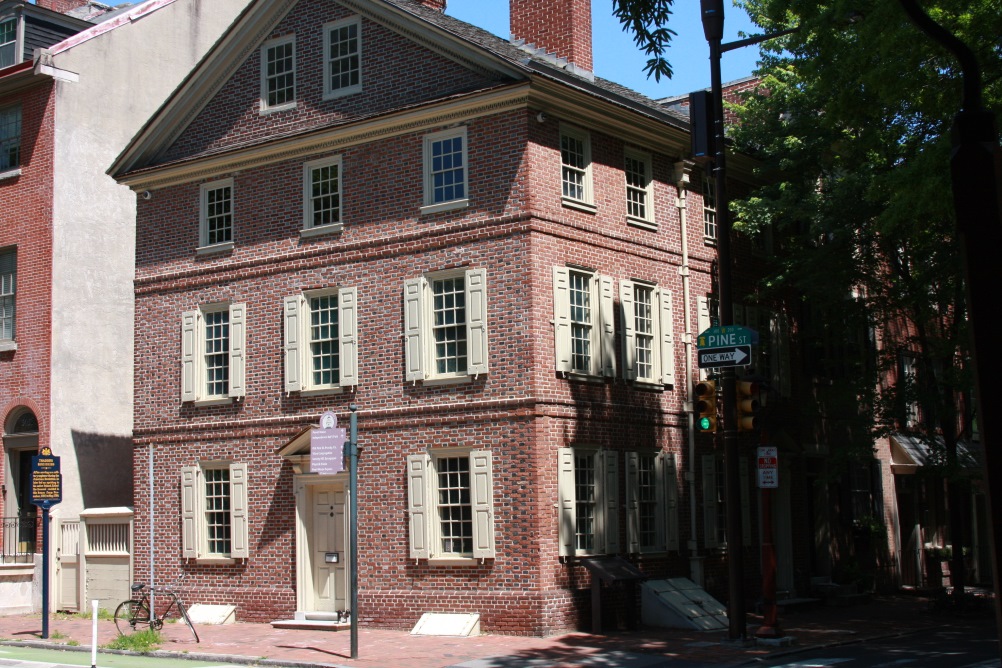
I then headed south several blocks and was standing on the doorsteps at noon, when the Thaddeus Kosciuszko National Monument opened. This is the smallest unit in the entire park system. Again, the Park Service does a great service filling in history that should be, but often isn’t, in school’s curriculum. Kosciuszko was a Pole who aided the American Revolution tremendously due to his engineering skills. He was a personal friend of Thomas Jefferson and several others who would be shocked if they knew today how few Americans know of him.
My final day (not counting the train ride home) saw me stop at one of the largest mansions ever built in the United States, Hampton, north of Baltimore. Fortunately, the man who used slave labor to build this beautiful house died shortly after it was complete and thus didn’t enjoy it for long, but his racist ancestors carried on the family tradition of forcing others to do their work. Some justice came after the Civil War, when they had to pay workers. Unable to afford it, they sold off land until there was almost none left, then sold the house to the Park Service.
The afternoon brought me to Fort McHenry, whose survival of a lengthy British bombardment in 1814 led to Francis Scott Key writing the Star-Spangled Anthem. This is a very nice park overlooking the bay. The Visitor’s Center is nice with an excellent video program and a stunning ending. I highly recommend this park.
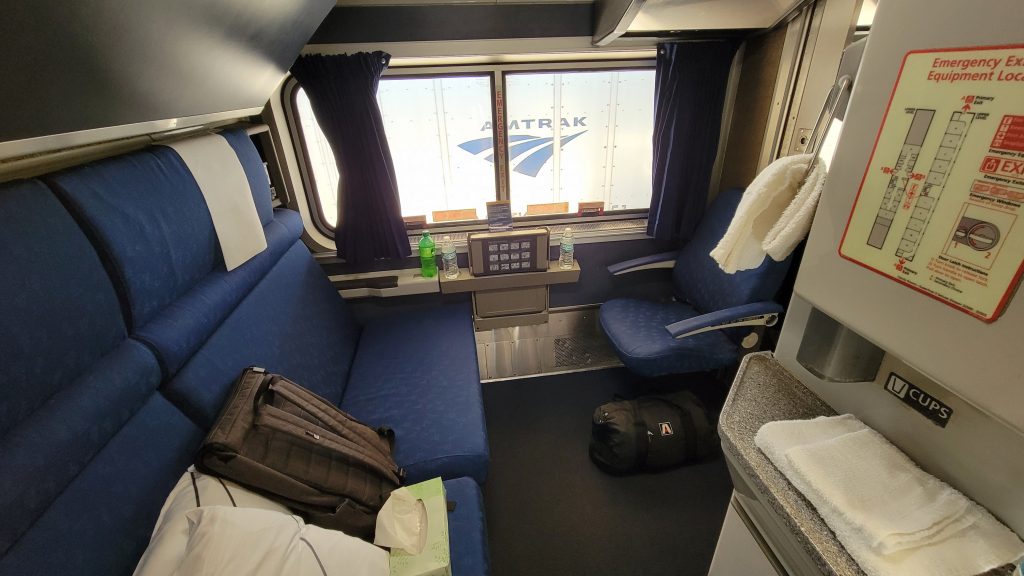
Suddenly it was time to go home. I thought I had booked a “Roomette” on the return trip, which is the smallest sleeper option Amtrak has. The price I paid was certainly in line with Roomettes, but I was surprised to find myself alone in a full sleeper, complete with a private bathroom and sink. It was perfect for me after a tiring two-week adventure. I was able to spread out a bit, fire up my laptop and catch up on some entries, and with the train’s wifi, post them en route. I slept fairly well and was ready for the 90-minute drive home after arriving back in Sanford.
After the disappointment of my third trip (not in the sites, but in my health), this was a very enjoyable trip. I had minimal issues getting around, and had generally great weather. I’m approaching 10% of the total parks visited, as I end this trip with 38 out of 423 checked off. Trip 5 will complete my first year and take in 15 more sites. I’ll be joined on that trip by another former coworker as we head to one of his favorite spots, Yellowstone National Park.
Steve